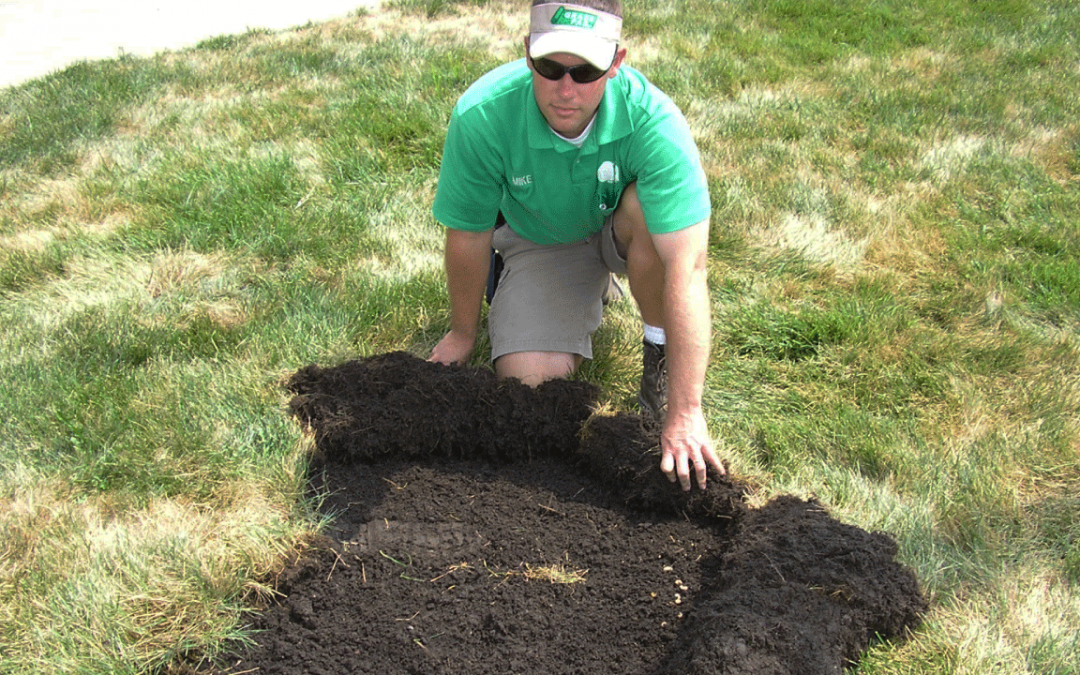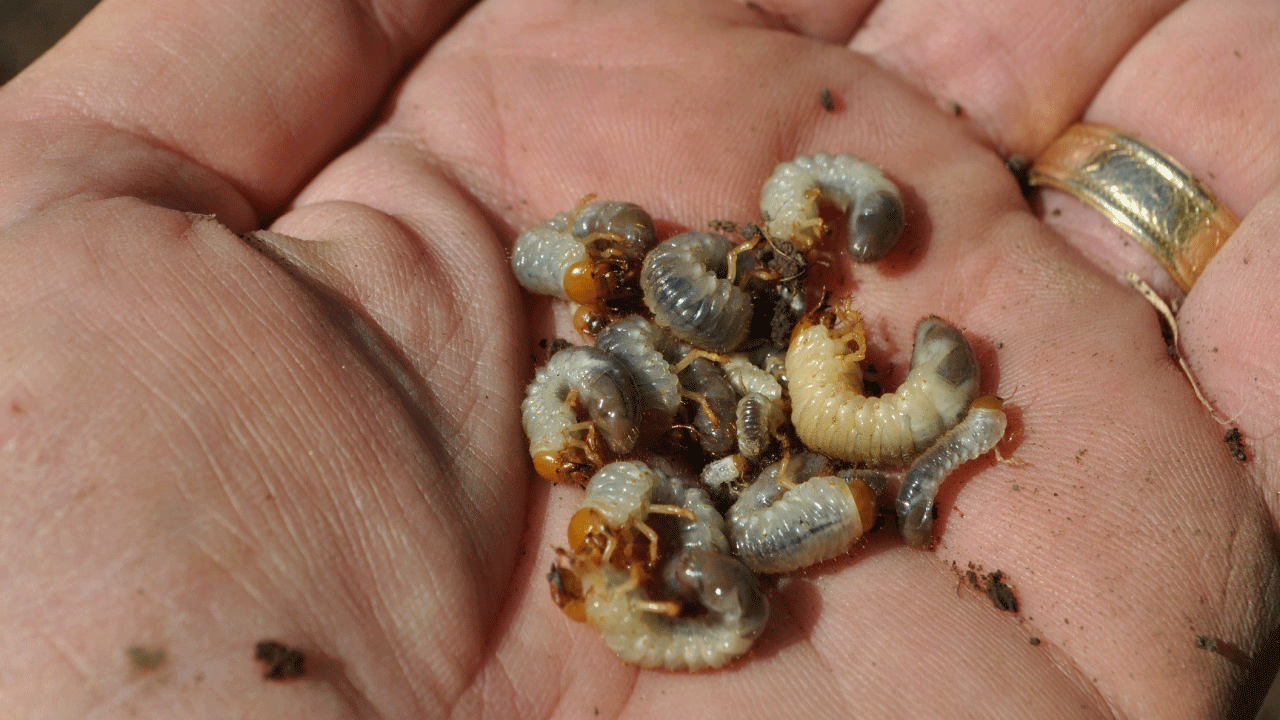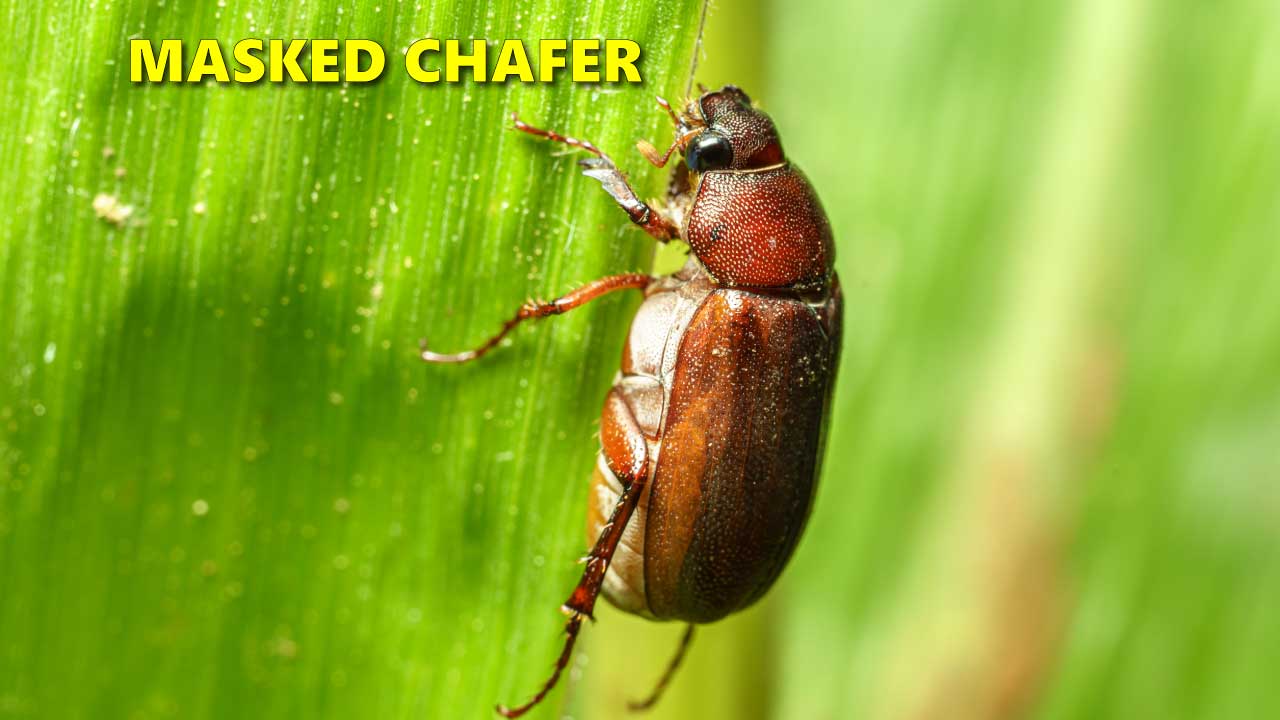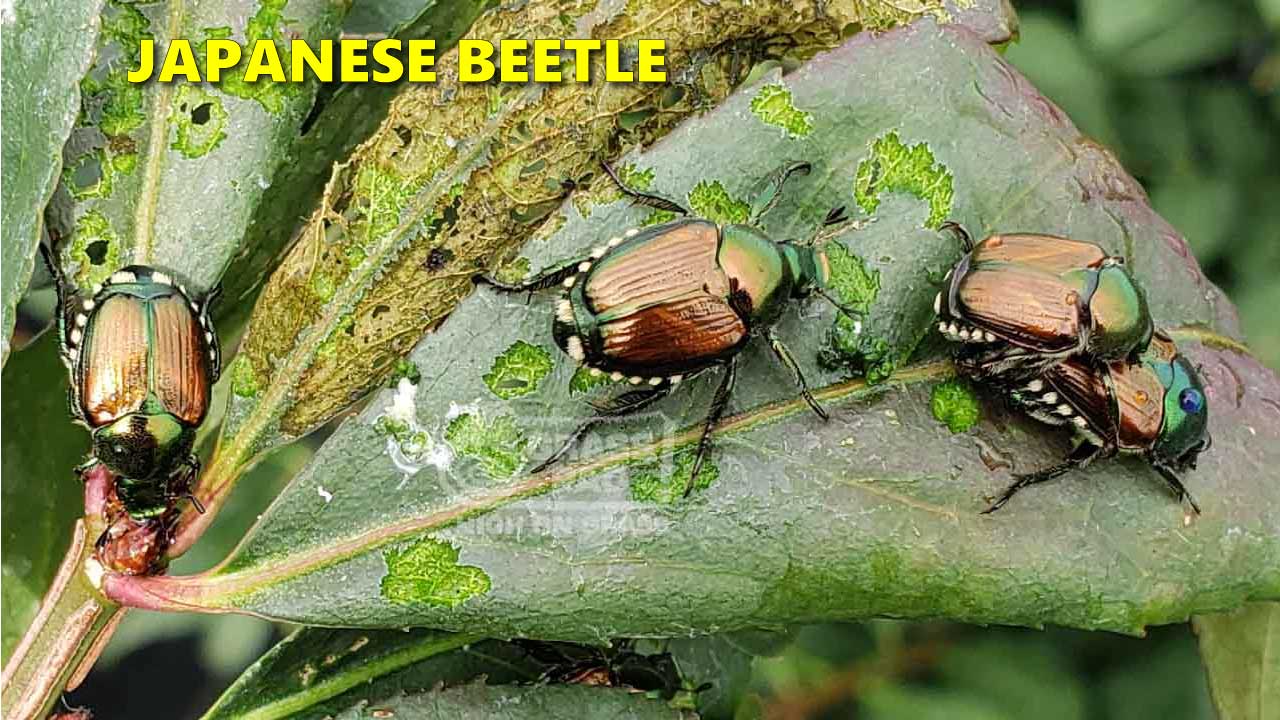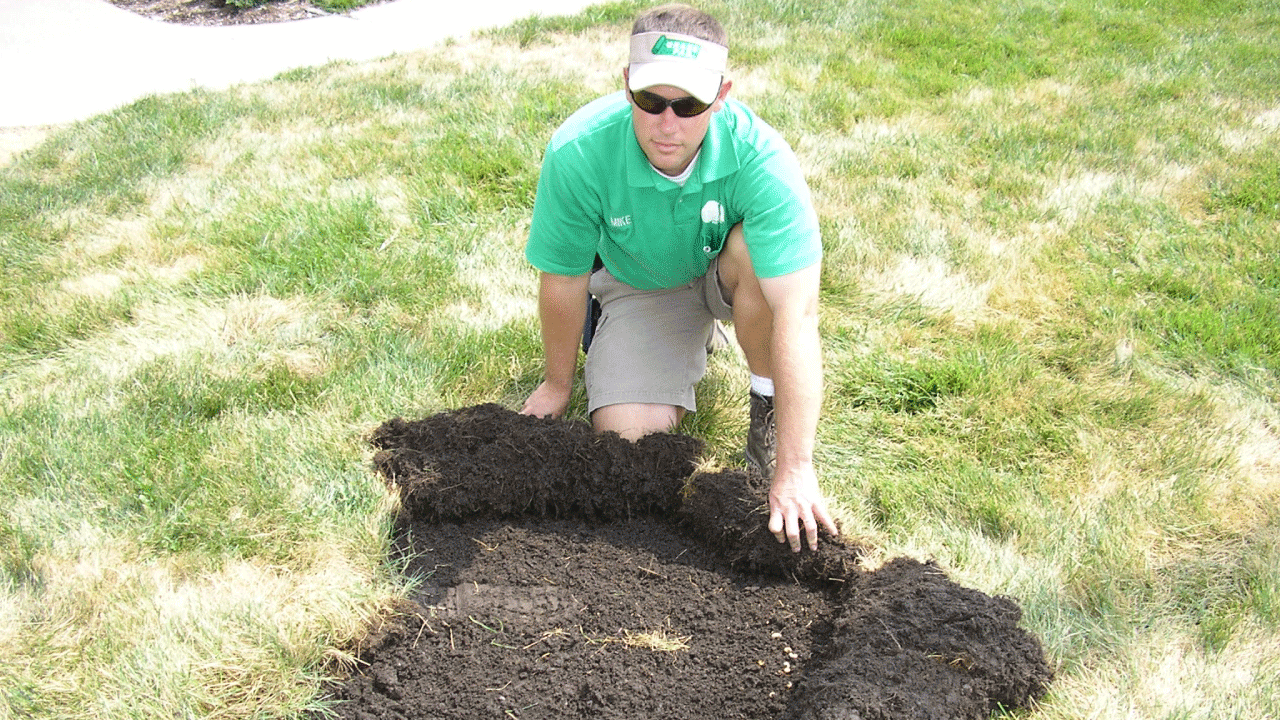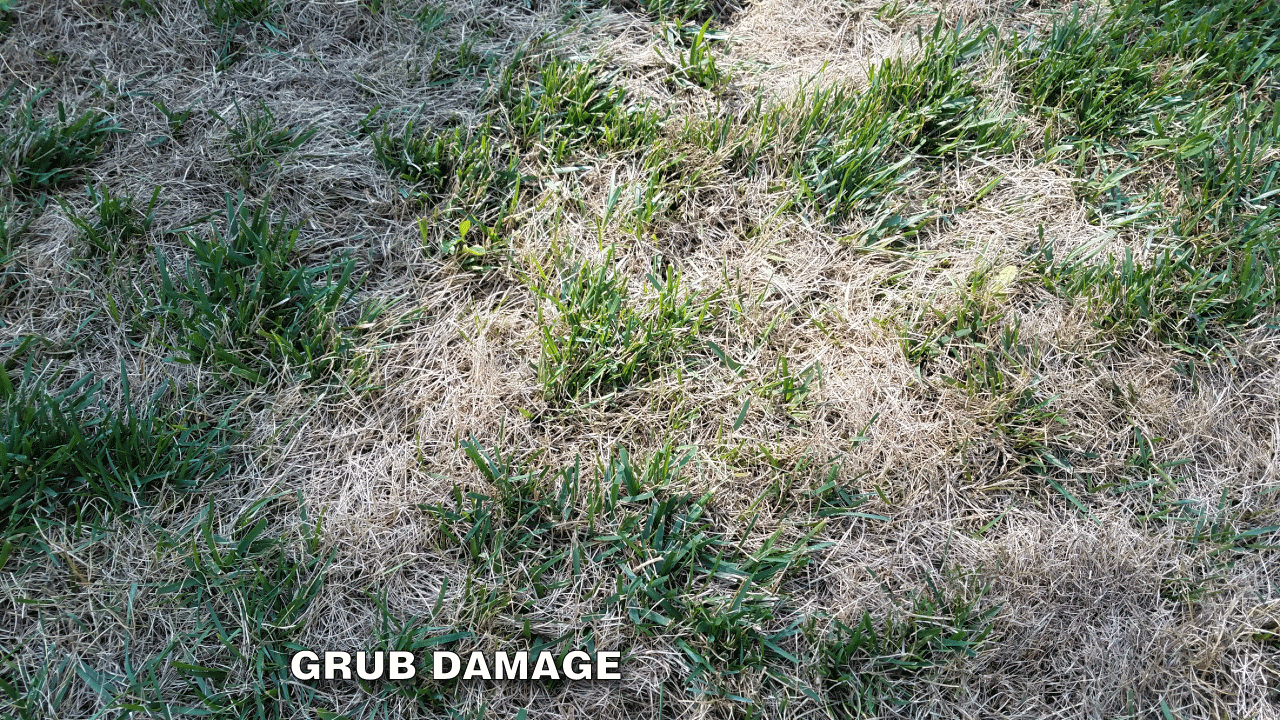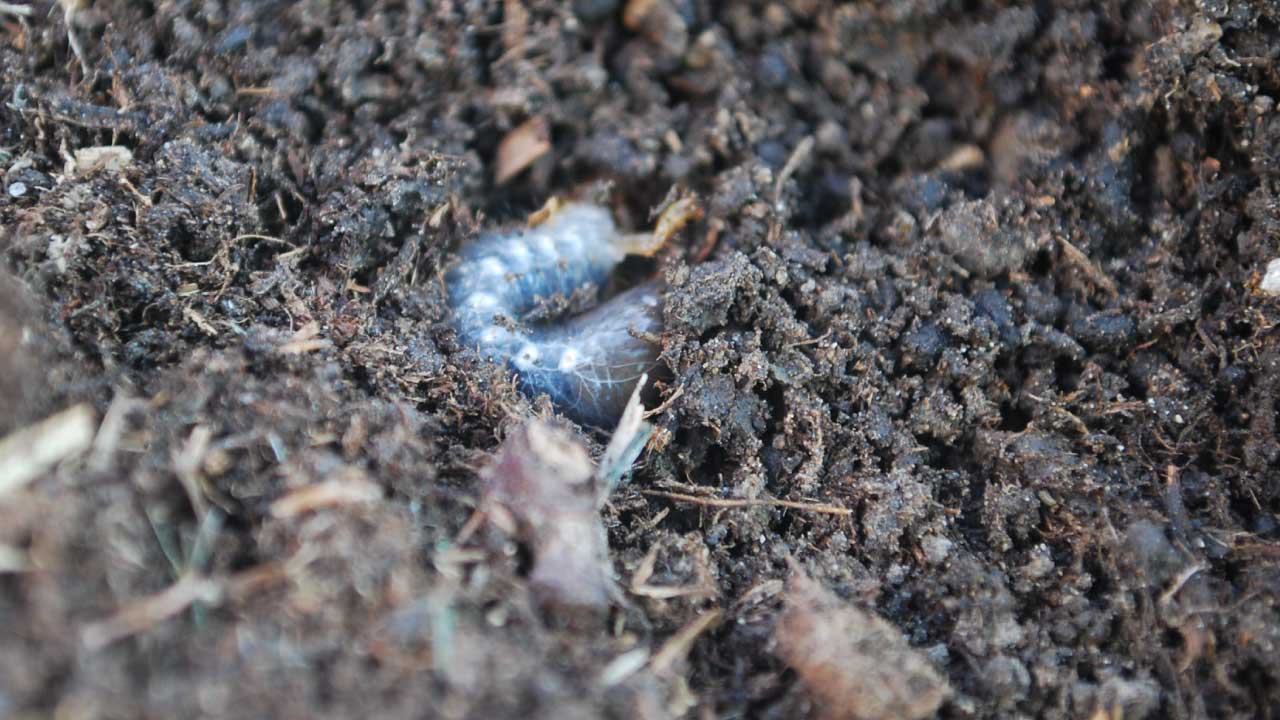The insect that historically causes the most significant destruction to mid-west lawns is the white grub. Grubs are challenging to control because they attack the grass from the basement. The white grub chews on grass roots underneath the thatch layer of the grass root system. This heavy thatch layer protects the grub from the insecticides that so easily control top-surface insects.
What Is a White Grub?
White grub is a general term used to describe the larval stage of several common large beetles – June Bugs, May Beetles, Masked Chafer Beetles, and Japanese Beetles. The grubs feed on the roots of your lawn and can kill large sections in a very short amount of time.
What Is the Life-Cycle of the White Grub?
Understanding the life cycle of the white grub is integral to fighting the white grub. Using specific control products at the wrong time of the season will be ineffective against the white grub, leaving you frustrated and wasting your hard-earned dollars.
Adult beetles emerge in late May through July, they will be most noticeable around street lamps, porch lights, patio screens, and pool skimmers. At this point, beetles will mate and lay eggs in the most beautiful lawn they can find. Eggs will hatch weeks later, and young grubs will feed voraciously on grass roots. The baby white grubs are most vulnerable to control at this young stage of life.
Japanese Beetles are a Different Breed
While some beetles reproduce on a three-year cycle, the annual white grubs that breed on a one-year cycle do the most damage here in the Midwest. While most of these beetles mate and hatch only once each season, the Japanese Beetle live longer and continues to reproduce with multiple staggered hatching creating an almost continual wave of grubs from August thru October.
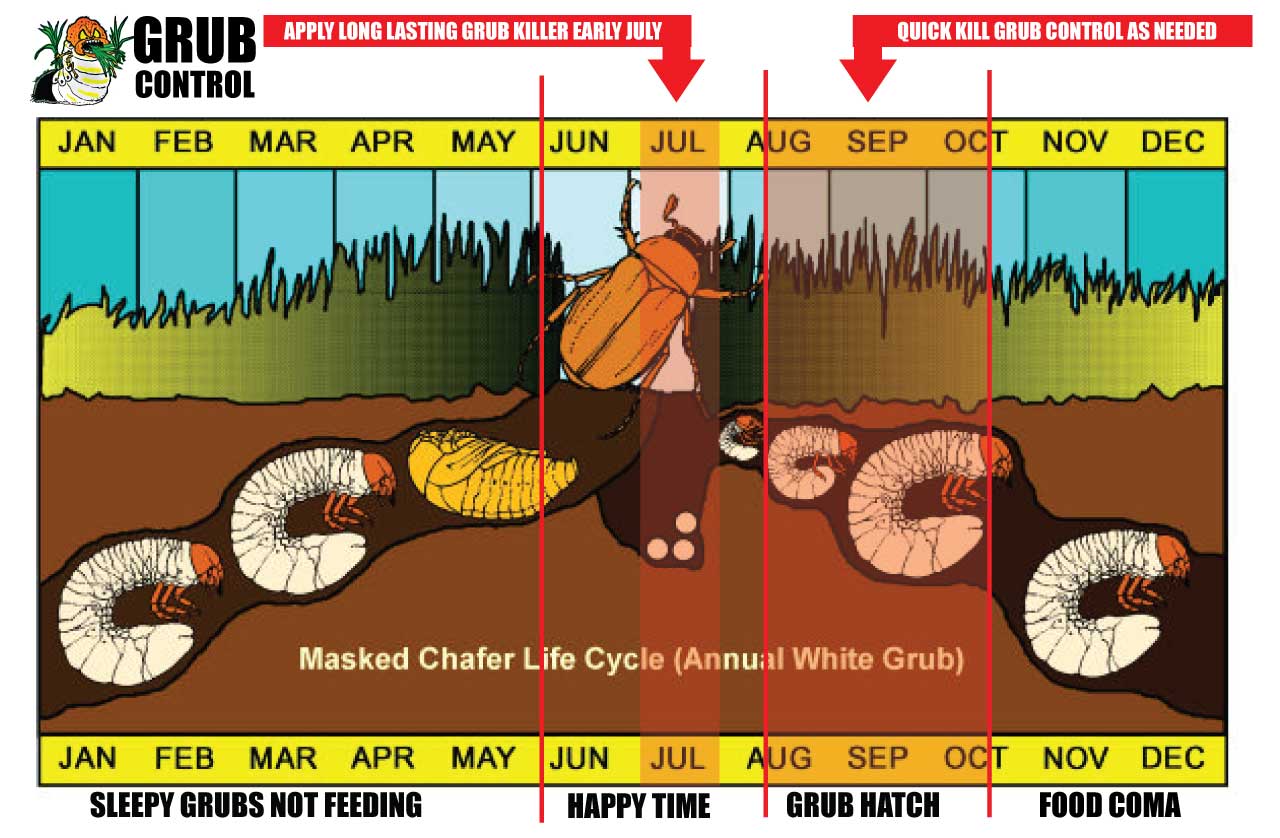
How to Control White Grubs
Using a two-step grub control program is the best control against white grubs. Long Lasting grub control is the first line of prevention against white grubs. The systemic action of Long Lasting grub control is absorbed by the grass plant. When baby grubs hatch, they feed on the roots and die. The second step for maximum results is to use Quick Kill grub control in early fall. Quick Kill is used as a fast-acting curative control to kill late-hatching grubs on contact. When applied as directed, Quick Kill will kill grubs within 72 hours after application.
When to apply Long Lasting Grub Control
Apply Grass Pad’s Long Lasting grub control in mid-June to early July before the lawn goes into heat stress. Long Lasting grub control gives greater flexibility in application timing and will stay active in the turf for about ninety days.
When Will Grub Damage Occur?
Grub damage can occur from mid-summer through early fall. Grub damage is the most severe when the turf is dry or under stress from lack of proper fertilization. Visible grub damage may not appear until September or October.
When to apply Quick Kill Grub Control
Apply Quick Kill as a curative control when grub damage has been detected. Quick Kill contains a fast-acting compound and is the only effective contact control for white grubs. Apply one inch of water immediately after the application of Quick Kill.
Uncle’s Tip: Apply Quick Kill grub control in the middle of September as Long Lasting grub control begins to fade. Continuing waves of late-hatching grubs are contained with this timely application.
How To Spot Grub Damage
Identification of grub damage can be tricky as it occurs when lawns can be stressed by summer drought or lawn disease. The best way to check for grub damage is to grab a handful of the affected turf and gently tug. The grass will peel back like a carpet, exposing the grubs that have eaten the roots. Grubs are often discovered after the turf has been disturbed by foraging skunks and raccoons.
What To Do If You See Grub Damage
If grub damage occurs, apply a curative application of Quick Kill grub control as soon as possible. Follow with an application of Loveland Renovator turf food and an aggressive watering regimen to help reduce the amount of damage that occurs. A thorough fall over-seeding and renovation will be necessary to complete the repair process.
Finding Grubs in Spring Gardens
Most folks first spot grubs while planting their spring flowers and gardens in late April or May, just before the time the grubs will pupate and change into the adult beetle. These mature grubs don’t cause excessive damage to roots and require no immediate treatment. However, your best control for spring grubs is an application of Quick Kill grub control.
More Related Articles to Grub Control
Japanese Beetle Summer Invasion
- Japanese beetles are this generation’s destroyer of the landscape. Learn More at this Link
Tips for Fall Renovation and Overseeding
- How to repair grub damage. Learn More at this Link
Control for Fleas, Ticks, and Chiggers
- Stop the blood-sucking insects before they get you. Learn More at this Link
Army Worm Invasion
- Armyworms can be devastating to the lawn. Learn More at this Link

